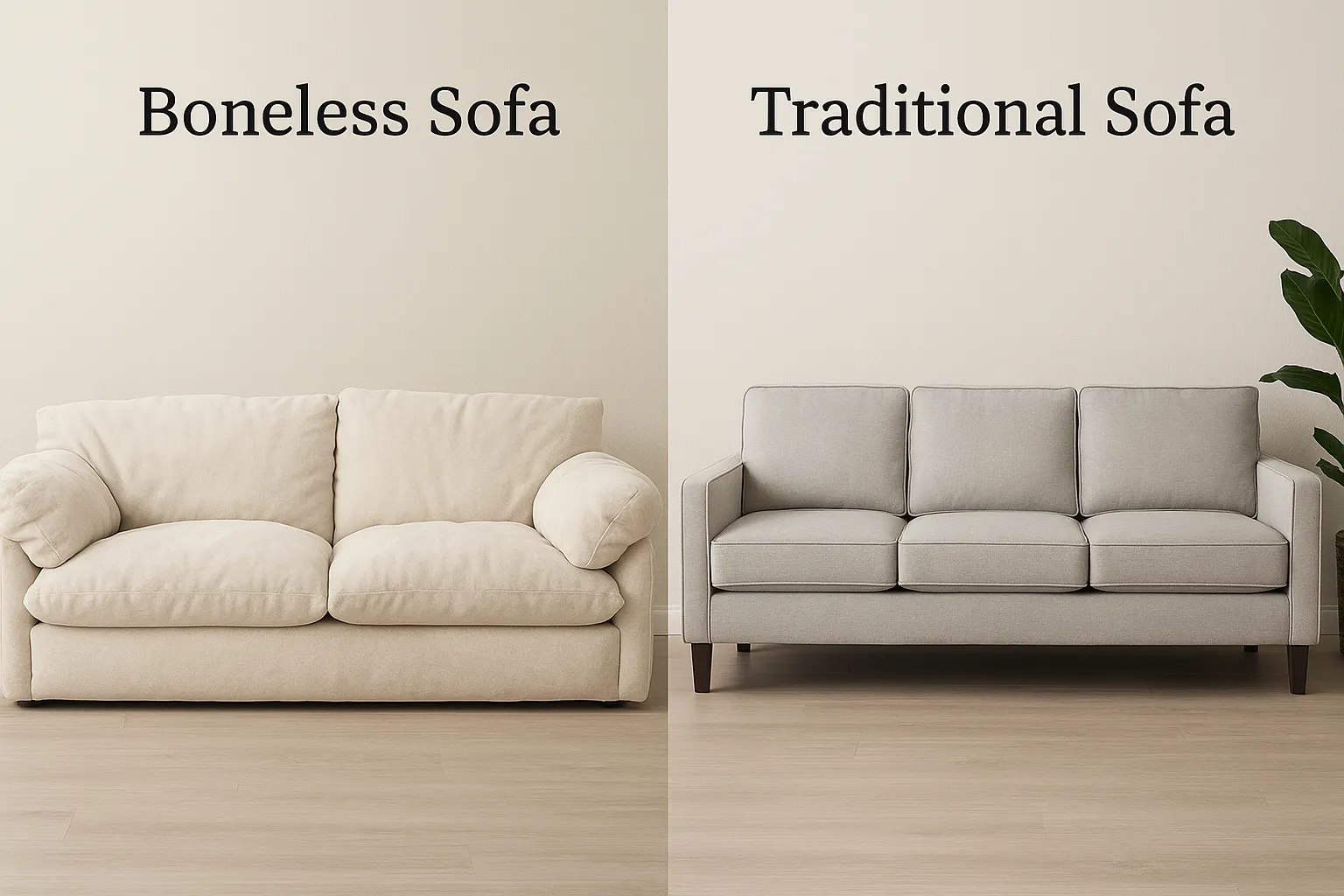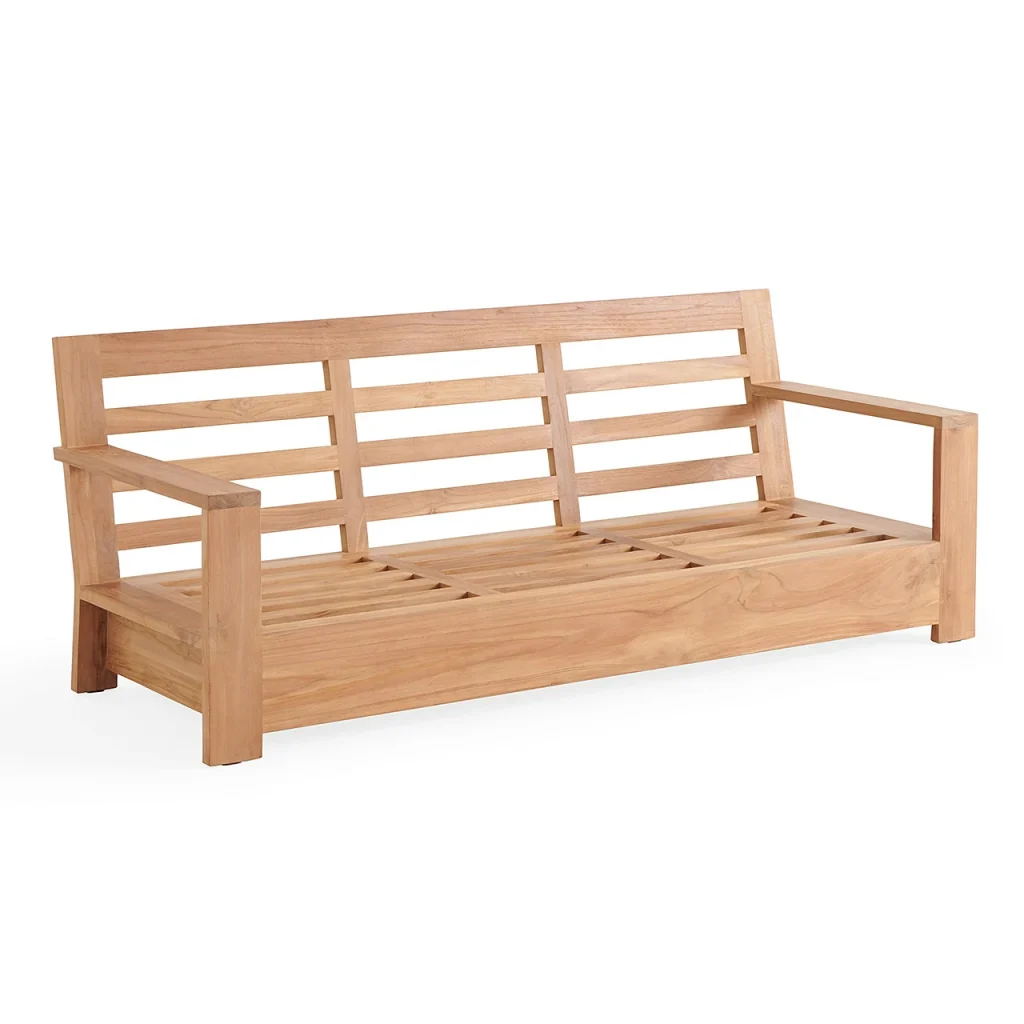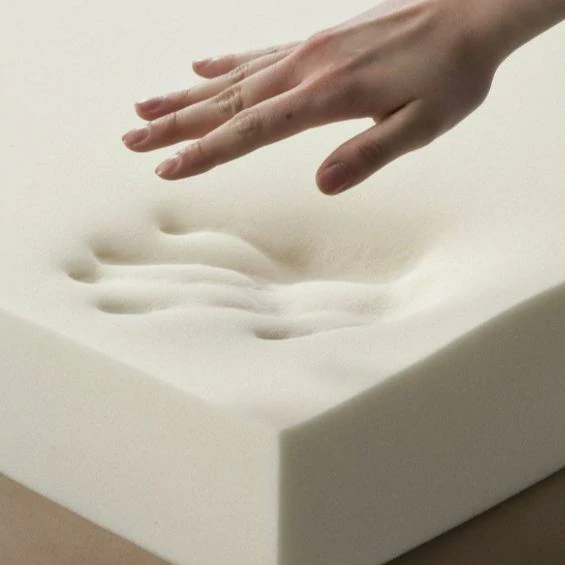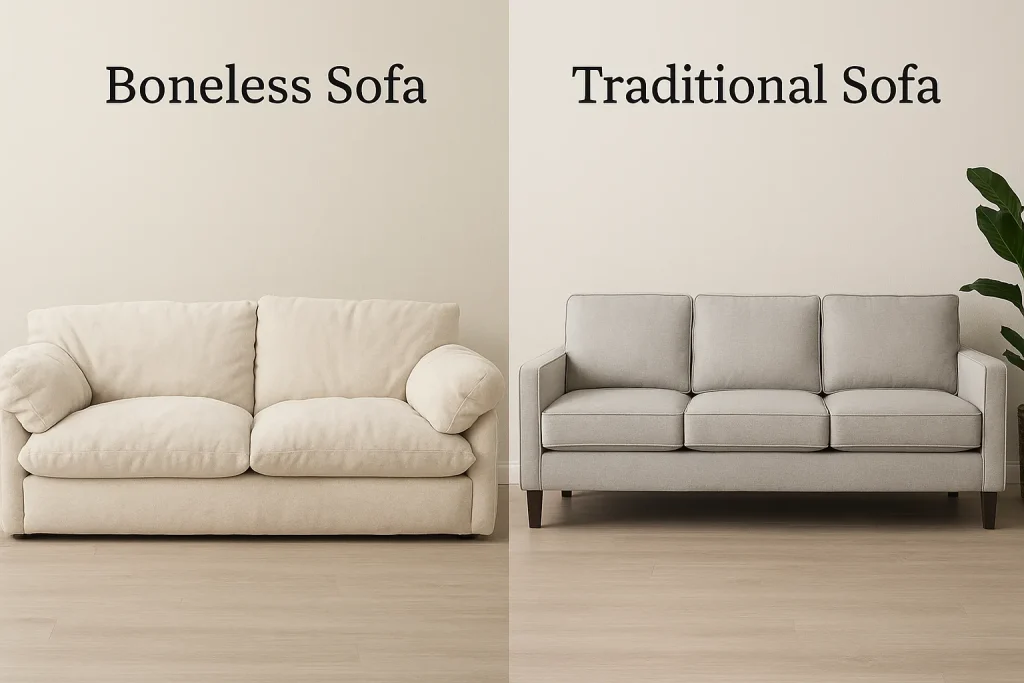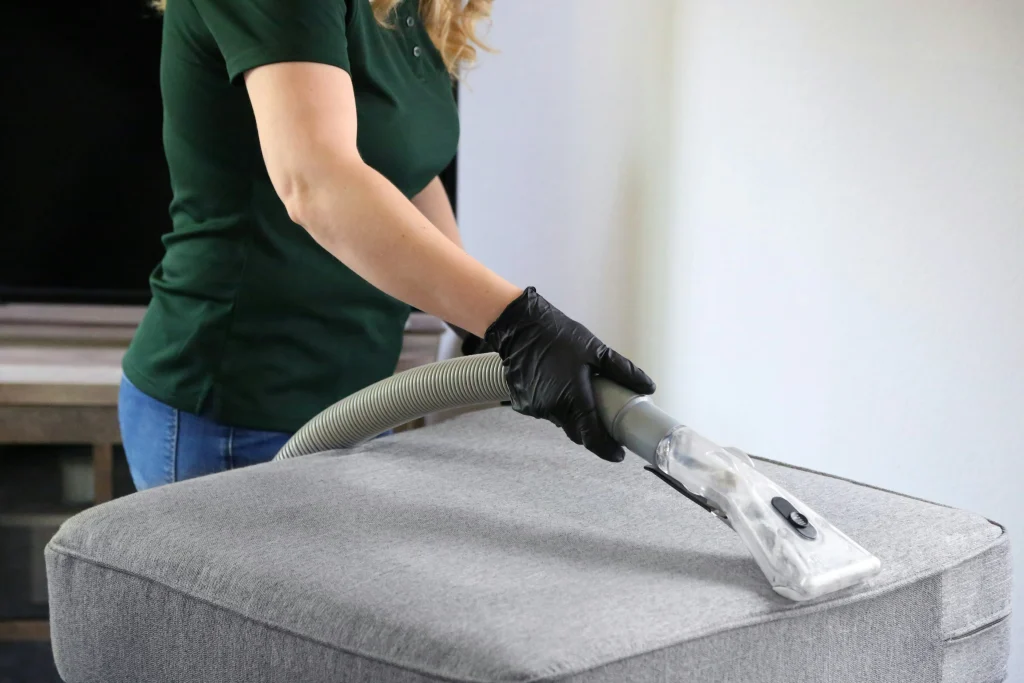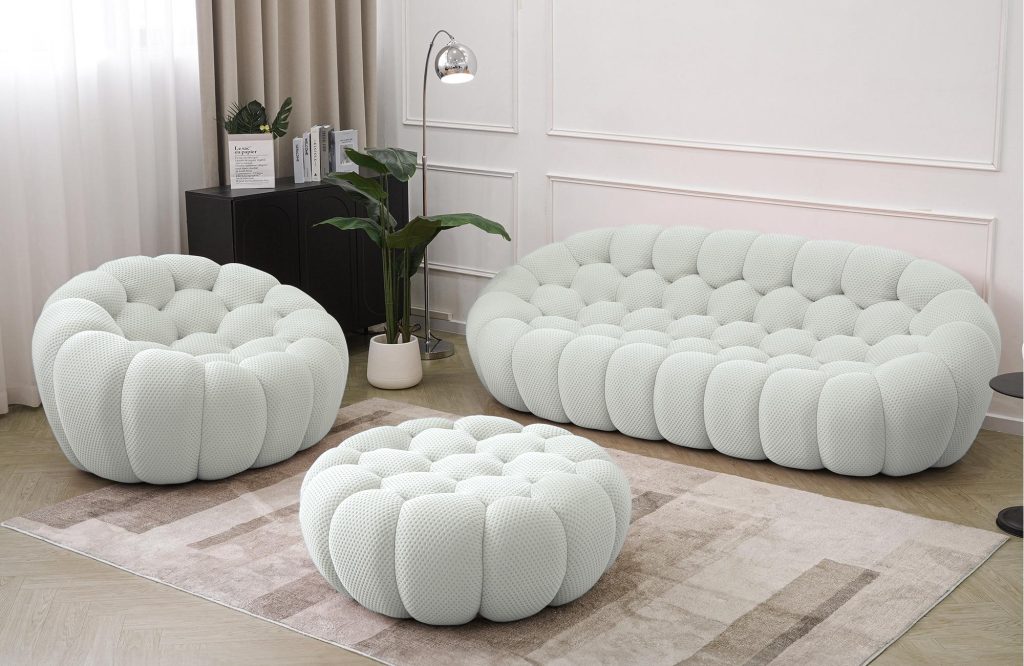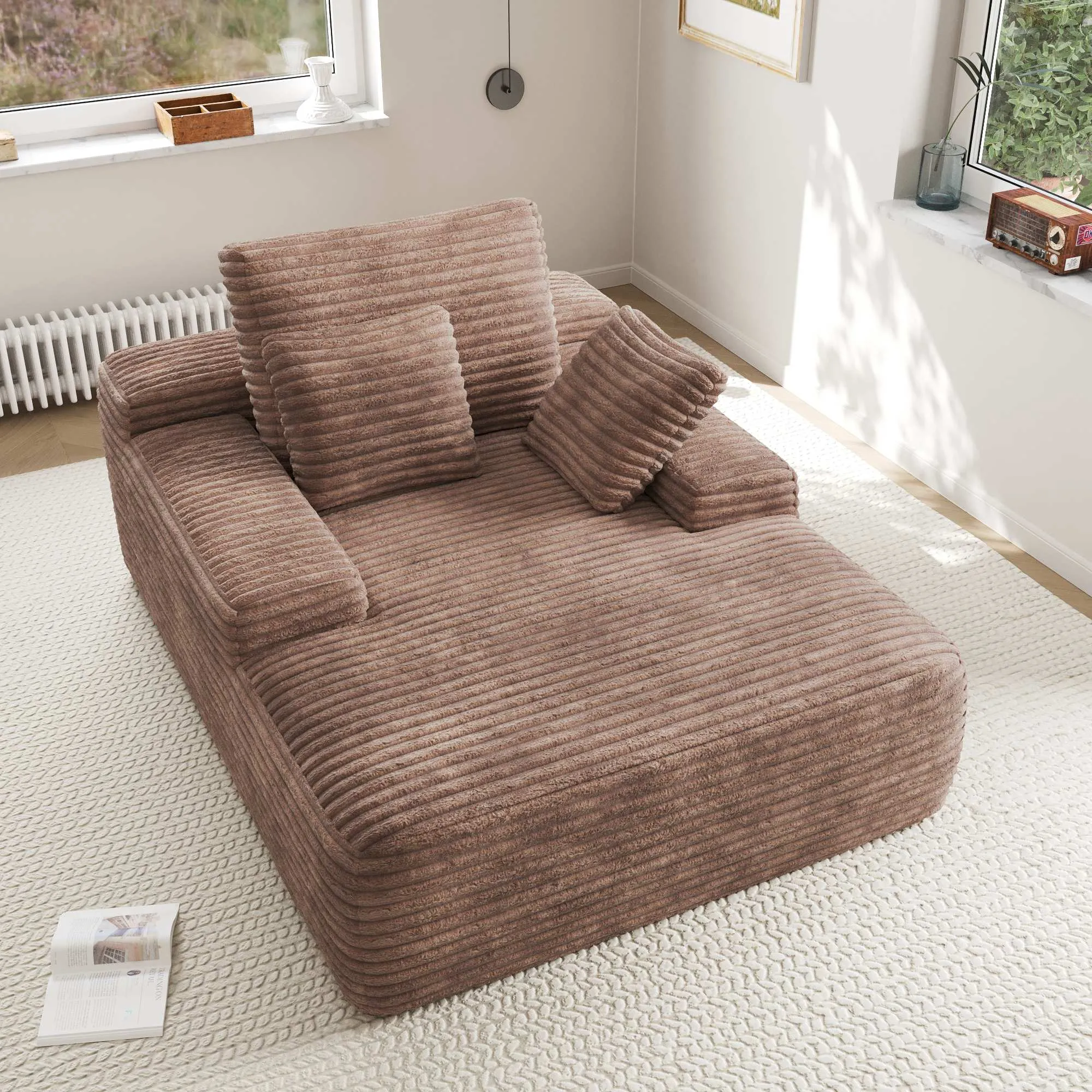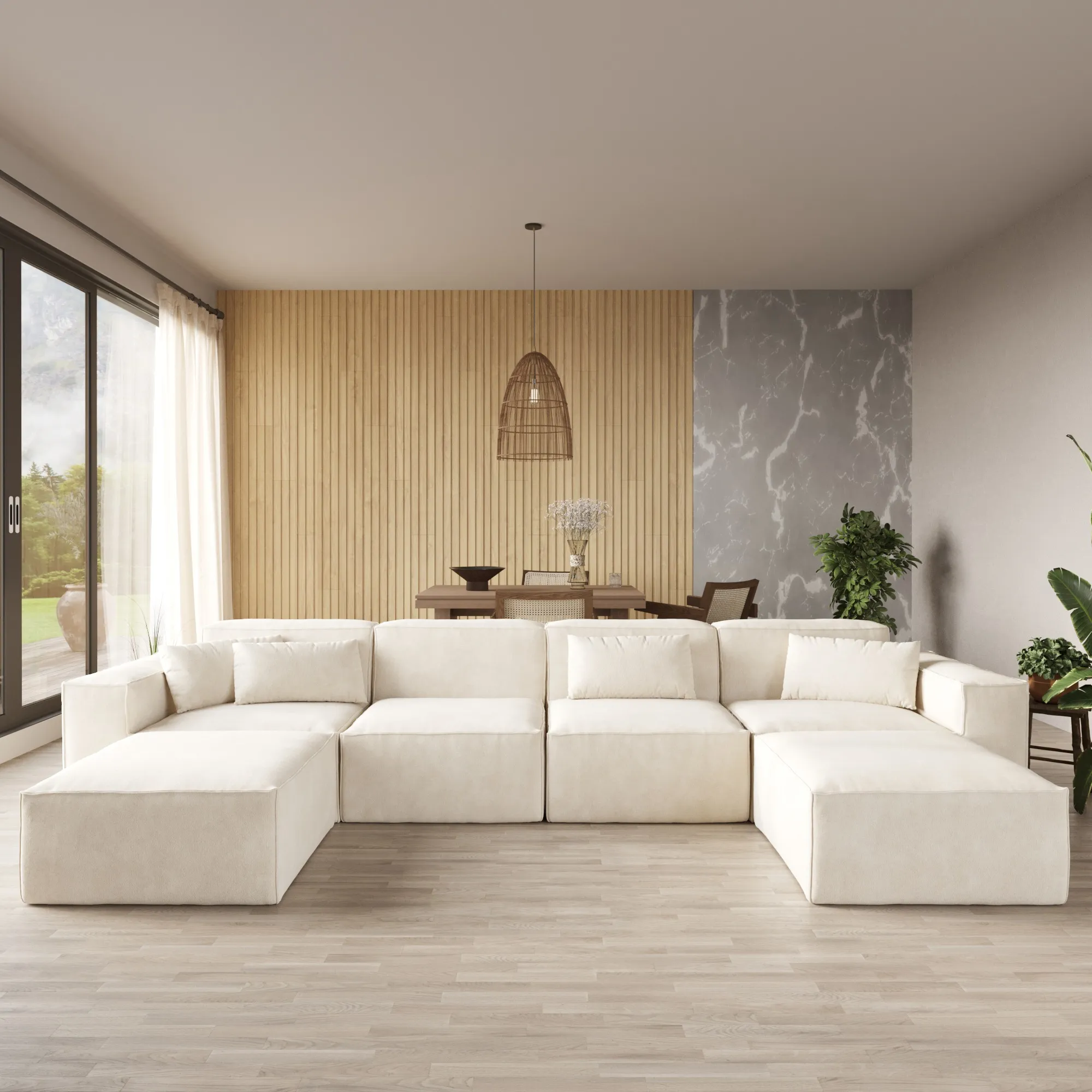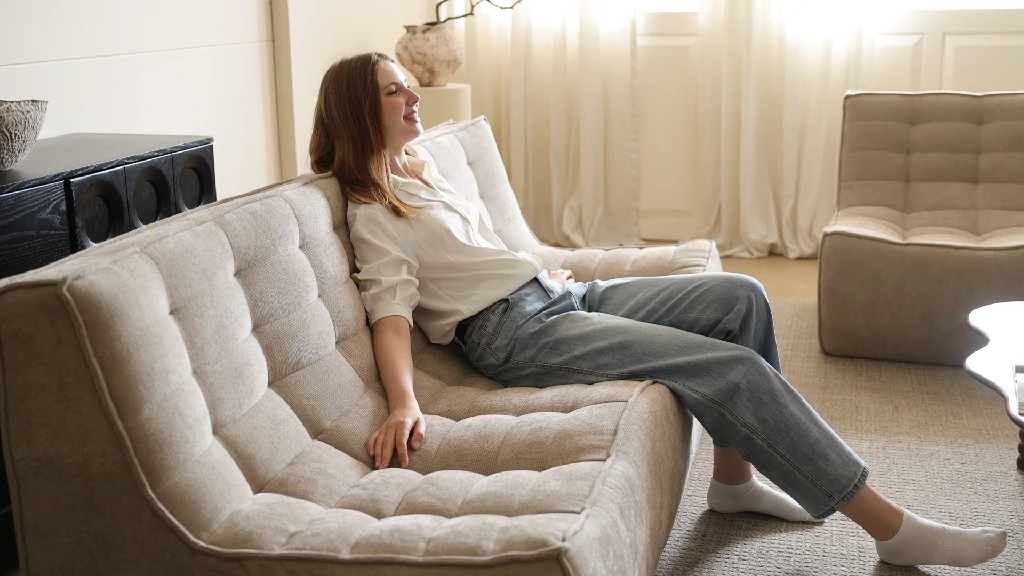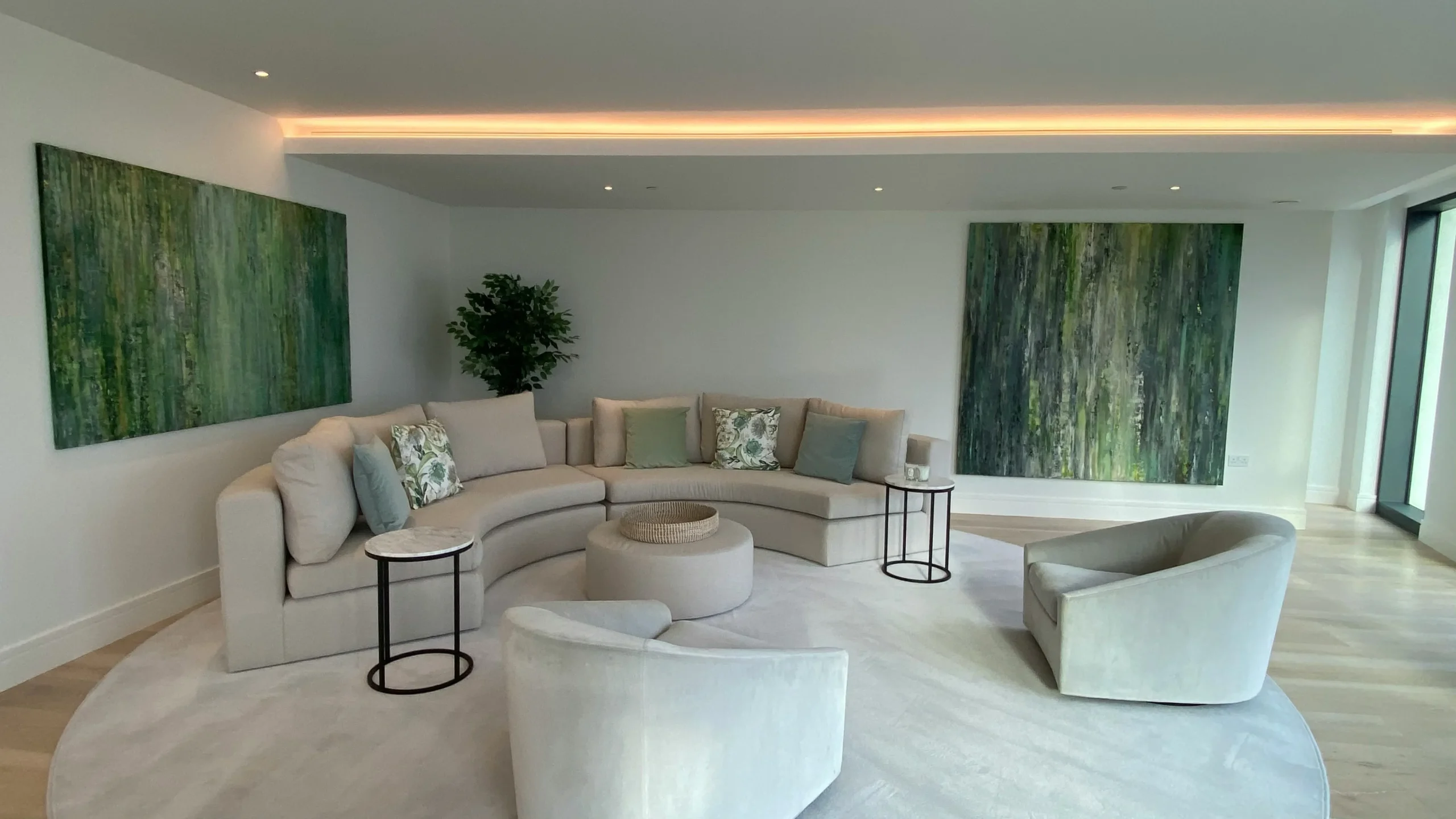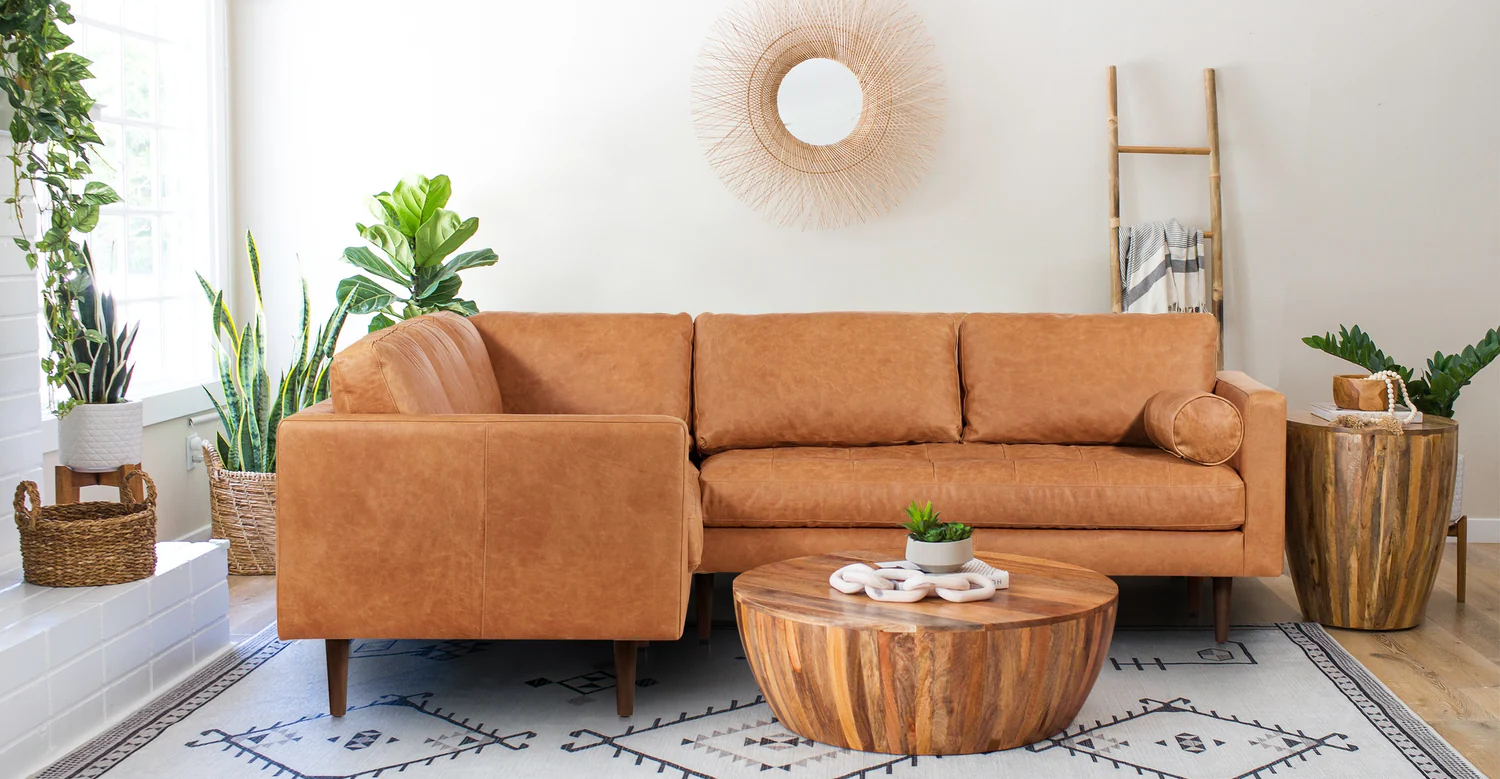Choosing a new sofa for your home is very exciting! You want a cozy spot to relax, watch movies, and spend time with family. But when you start shopping, you find two main kinds of sofas: the boneless sofa and the traditional sofa. These two styles are very different, and picking the right one is important for your comfort and your wallet.
A traditional sofa is what you probably think of first. It has a stiff, solid frame, often made of wood. A boneless sofa, often called a cloud or compression couch, is newer. It does not have a hard frame at all. Instead, it gets its shape and support from thick foam blocks or modules.
Here at Atunus Home, we know that many people are asking: Which one is better? This article will break down the differences between the boneless sofa and traditional sofa so you can pick the perfect fit for your life and your home.

